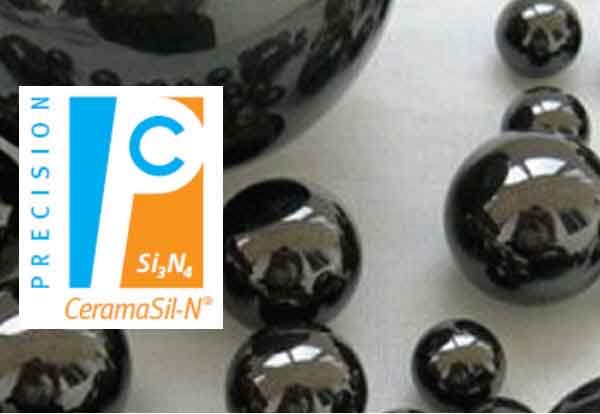Silicon Carbide (SiC)
Silicon Carbide (SiC) has properties remarkably similar to those of diamond – it is one of the lightest, hardest, and strongest technical ceramic materials and has exceptional thermal conductivity, resistance to acids, and low thermal expansion. Silicon Carbide is an excellent material to use when physical wear is an important consideration because it exhibits good erosion and abrasive resistance, making it useful in a variety of applications such as spray nozzles, shot blast nozzles and cyclone components.
Silicon Carbide Properties
The technical properties of silicon carbide are remarkably similar to those of diamond. It is one of the lightest, hardest and strongest technical ceramic materials and has exceptional thermal conductivity, chemical resistance and low thermal expansion.
- Extremely high hardness
- Wear resistant
- Corrosion resistant
- Lightweight – Low Density
- High thermal conductivity
- High Young’s modulus
- Low thermal expansion coefficient
- Chemically and thermally resistant
- Outstanding thermal shock resistance
- Refractive index greater than a diamond
Related Materials
Within the current range of technical ceramics available from China Ceramic Parts are two of the hardest materials known to man. Only surpassed by diamond itself, Boron Carbide and Silicon Carbide have, over the years, earned the distinguished title of ‘Super Hard Ceramics’.

Boron Carbide
Boron Carbide (B4C), also known as black diamond, is the third hardest material after diamond and cubic boron nitride. It is a suitable material for many high performance applications due to its attractive combination of properties.

Silicon Nitride
Silicon Nitride has the most versatile combination of mechanical, thermal, and electrical properties of any technical ceramic material.
Silicon Carbide Manufacturing
Silicon Carbide can be machined in green, biscuit, or fully dense states. While in the green or biscuit form it can be machined relatively easily into complex geometries. However, the sintering process that is required to fully densify the material causes the Silicon Carbide body to shrink approximately 20%. This shrinkage means that it is impossible to hold very tight tolerances when machining Silicon Carbide pre-sintering. In order to achieve very tight tolerances, fully sintered material must be machined/ground with diamond tools. In this process a very precise diamond coated tool/wheel is used to abrade away the material until the desired form is created. Due to the inherit toughness and hardness of the material, this can be a time consuming and costly process.
Like both oxides and nitrides, silicon carbide is a very hard wearing material which requires diamond-grinding methods to process once fired. Although not exclusively, carbides are used mainly for applications in which physical wear is a major consideration.
Frequently Asked Questions
- What is Silicon Carbide used for?
Silicon Carbide has properties remarkably similar to those of diamond – it is one of the lightest, hardest, and strongest technical ceramic materials and has exceptional thermal conductivity, resistance to acids, and low thermal expansion. Silicon Carbide is an excellent material to use when physical wear is an important consideration because it exhibits good erosion and abrasive resistance, making it useful in a variety of applications including the following:
- Valve seats
- Sliding bearings
- Mechanical seals
- Plungers
- Seal rings (water ring pumps)
- Wear parts (thread guides)
- Kiln furniture crucibles
- Burners
- Blast nozzles
- Heat exchangers
